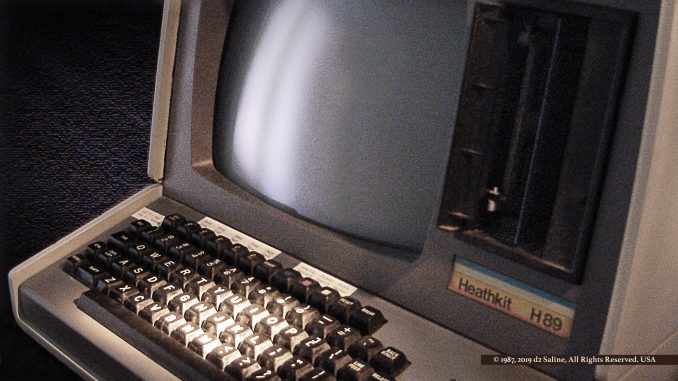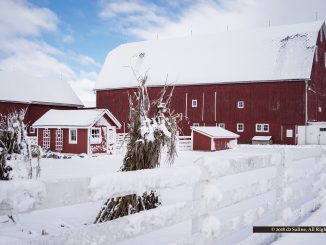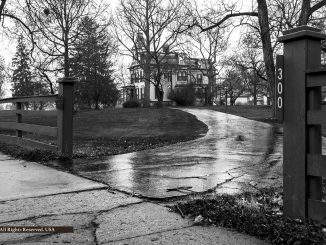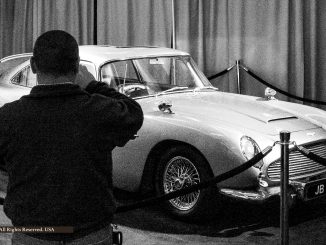
From the Editor—
There’s a saying among professional Nikon photographers (perhaps others, too): If you want people to stop asking what brand of camera you use, affix a black piece of tape over its name. [1]
Somewhat of an inverse corollary appears to have been prompted by a reference that I made to Creative Commons licensing in my February editorial. [2]
Without getting into the legal particulars, an image becomes the sole property of the person who made it at the very instant it was made. Documented registration with some far away office in Washington DC is not required, nor is any sort of watermark or indicia with the letter “C” in a circle on its face. The moment you take a photograph with your smartphone camera, you own it. [3-6]
The same is true for me and my images, and for Saline Journal, which can and does own images that I make on its behalf.
Wannabe Clarence Darrow types frequently try to rationalize their theft of these images by erroneously suggesting that they have rights under something called “fair use.” Probe just a little bit further and you’ll find that few are aware that specific are used to validate (or refute) such claims. Fewer still can then defend themselves when actually faced with these threshold tests. [7-10]
Creative Commons licensing provisions on hosting platforms such as flickr allow copyright holders to both broadly protect their intellectual property interests while at the same permitting use of specific work by others in limited cases. “Saline Journal” is registered on flickr to protect the name, but the “Dell Deaton” Pro account is what we exclusively use for Saline Journal content. [11-14]
So far, I’ve only used two types of designations for my flickr-hosted photographs. To see permission setting, click on the image, then look just below it, to the right. Under the date you’ll see either the letter “C” in a circle followed by “All rights reserved,” or a series of symbols in circles followed by “Some rights reserved” and a drop down arrow.
“All rights reserved” means exactly what it says.
Other photographs where the drop down menu leads to “Attribution-NonCommercial-NoDerivs” mean that you are free to share, “copy and distribute the material in any medium or format,” and that this permission cannot be revoked “as long as you follow the license terms.” Specifically, I’ve set those terms as follows. [15]
- Attribution — You must give appropriate credit, provide a link to the license …. You may do so in any reasonable manner, but not in any way that suggests the licensor endorses you or your use.
- NonCommercial — You may not use the material for commercial purposes.
- NoDerivatives — If you remix, transform, or build upon the material, you may not distribute the modified material.
Presently, over 86% of my flickr images can be downloaded with Creative Commons permissions.
As I wrote last month, we are doing this to help provide a multiplier effect on communicating the story of Saline Michigan to even wider audiences where people have an interest in doing so. Individually, you may have other personal interests for their use. Either way, we are not charging for this access, and thus have put very little by way of restrictions on the use of our work by others, eg, for commercial purposes.
All images are at the highest resolution we’re making available, 1639 x 2048 pixels at 300 dpi. Beyond that, time does not permit me to handle further processing in response to special requests. That’s the belance we’ve struck between this and fulfilling our primary obligation to provide excellence in unique editorial content on a regular basis.
That’s as far as I imagine we can go with this — short of covering all details above with black tape.
References
- “D810” Nikon.
- Creative Commons (home page).
- “There’s no such thing as ‘one stop shopping for all news,’ but we are constantly improving what our own shop offers” Dell Deaton (February 4, 2019) Saline Journal.
- US Copyright Office (home page).
- “Copyright Basics” Copyright Clearance Center (September 24, 2010) YouTube.
- “Licensing considerations” Creative Commons.
- “Clarence Darrow” Encyclopaedia Britannica.
- “More Information on Fair Use” US Copyright Office.
- “Copyright & Fair Use” Stanford University Libraries.
- “Measuring Fair Use: The Four Factors” Stanford University Libraries.
- “Share your work” Creative Commons.
- “Intellectual property” Cornell University.
- Saline Journal (flickr feed).
- Dell Deaton (flickr feed).
- “Attribution-NonCommercial-NoDerivatives 4.0 International (CC BY-NC-ND 4.0)” Creative Commons.



